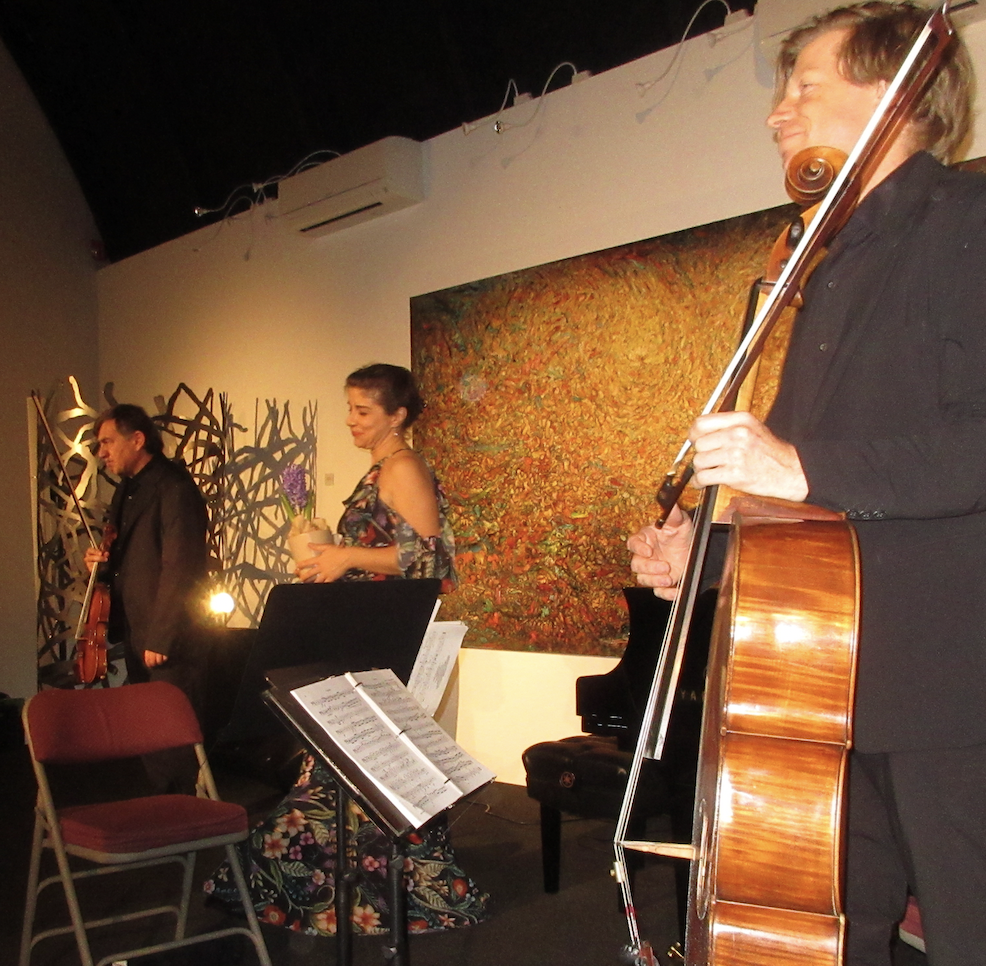|
Symphony
SRS SEASON ENDS WITH RESOUNDING TA-TA-TA-BANG
by Terry McNeill
Sunday, June 1, 2025
Symphony
YOUTHFUL VIRTUOSITY ON DISPLAY AT USO'S MAY CONCERTS
by Peter Lert
Saturday, May 17, 2025
Symphony
MYSTICAL PLANETS AND LIVELY GERSHWIN ORTIZ AT FINAL SRS CONCERT
by Peter Lert
Sunday, May 4, 2025
Symphony
VSO'S CONCERT MUSIC OF TIME, MUSIC OF PLACE
by Peter Lert
Sunday, April 27, 2025
Choral and Vocal
VOCAL ELEGANCE AND FIRE AT THE 222'S RECITAL APRIL 26
by Pamela Hicks Gailey
Saturday, April 26, 2025
CANTIAMO SONOMA SINGS AN INSPIRED GOOD FRIDAY MOZART REQUIEM CONCERT
by Pamela Hicks Gailey
Friday, April 18, 2025
DRAMATIC SHOSTAKOVICH SYMPHONY CLOSES PHILHARMONIC'S 25TH SEASON
by Terry McNeill
Sunday, April 13, 2025
LARGE COLLEGE OF MARIN AUDIENCE GREETS STOPHER ARTISTRY
by Terry McNeill
Saturday, April 5, 2025
Chamber
FRISSON DELIVERS SHIVERS OF DELIGHT
by Abby Wasserman
Sunday, March 30, 2025
OLD AND MOSTLY NEW IN SRS MARCH CONCERT IN WEILL
by Peter Lert
Saturday, March 22, 2025
|
 |
 Hollywood Piano Trio April 2 at The 222 |
DISPARATE TRIOS IN HOLLYWOOD PIANO TRIO'S 222 CONCERT
by Terry McNeill
Saturday, April 2, 2022
It’s often said that opposites attract, and the two piano trios performed April 2 did attract a full house at Healdsburg’s 222 Concert Series. And yes the Schumann D Minor (Op.63) and the Shostakovich E Minor (Op. 67), composed nearly a century apart, are pretty much antipodal.
Played by the Hollywood Piano Trio before 120 people in cabaret seating, the Shostakovich ended the concert’s first half in a lengthy and somber traversal that characterizes much of the composer’s writing in the 1944 wartime period. Opening harmonics with string mute from cellist Eric Byers were suitably mysterious, with zero vibrato, and leading into an Andante-Moderato that was unmistakably Shostakovich in biting drama. Driving rhythms in the following Allegro were raucous and relentless, reminiscent of the Op. 57 Quintet from the same period.
A highlight of the performance was the sad but captivating Largo where pianist Inna Faliks’ clipped phrases combined with Mr. Byers and violinist Roberto Cani in an odd pizzicato trio. Here the ensemble was excellent with the cello line’s bottom sounding argumentative and Mr. Cani’s spiccato bow light on the strings. The sound in the final two movements portrayed tragedy and an anxious mechanical feeling, with Ms. Feliks’ playing adding tone color in the elegiac Largo. The playing caught the work’s disturbing force.
Schumann’s D Minor Trio (Op. 63) concluded the concert in a reading vastly removed from the Shostakovich. Mt. Cani’s intonation tended to wander at high e-string notes, but he settled down in the rambling opening movement that featured a leisurely tempo appropriate to the work from 1848, proving that all who wander are not lost. The chorale section was lovely.
Octaves in the strings began the Scherzo, interchanging with Ms. Felix’s piano line and the many repetitive phrases. The playing had the requisite energy and drive. Endless melody characterized the third movement (Langsam) and the somber soft interjections from the piano underscored the melancholy and syncopation. There was no pause for the finale’s opening jubilant theme. If there was any gloom in the music before, it was now gone with virtuoso playing from each musician. Mr. Byers pianissimo playing in the second theme was splendid.
Throughout the Schumann finale Ms. Falik’s playing was too loud, often covering her partner’s sound and lessening ensemble clarity. The house piano’s sonority was more than ample for the art gallery’s space, even with an audience, tables, art and short ambient reverberation.
Bloch’s Three Nocturnes for Piano Trio opened the program, preceded by Ms. Falik’s overly long remarks from the stage that followed Producer Gary McLaughlin’s informative pre-concert talk. A gentle atmosphere pervaded the playing in the first two, a sad lament in the Andante evolving into a lovely instrumental trio in the Andante quieto, Mr. Byer’s wide vibrato highlighting the haunting and bucolic music. The final Nocturne was played briskly with pulsating rhythms and the piano line sporadically covering the cello and violin. The bantamweight ending was a delight.
Healdsburg’s new 222 Music Series has developed an ardent following with appealing programs, a cash bar, gallery art from the sublime to the inane, and professional production elements.
|

